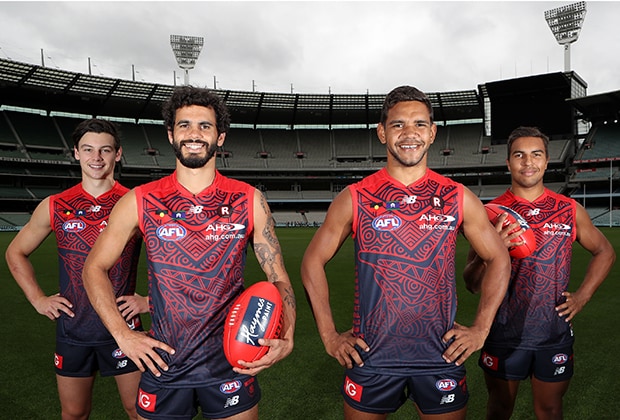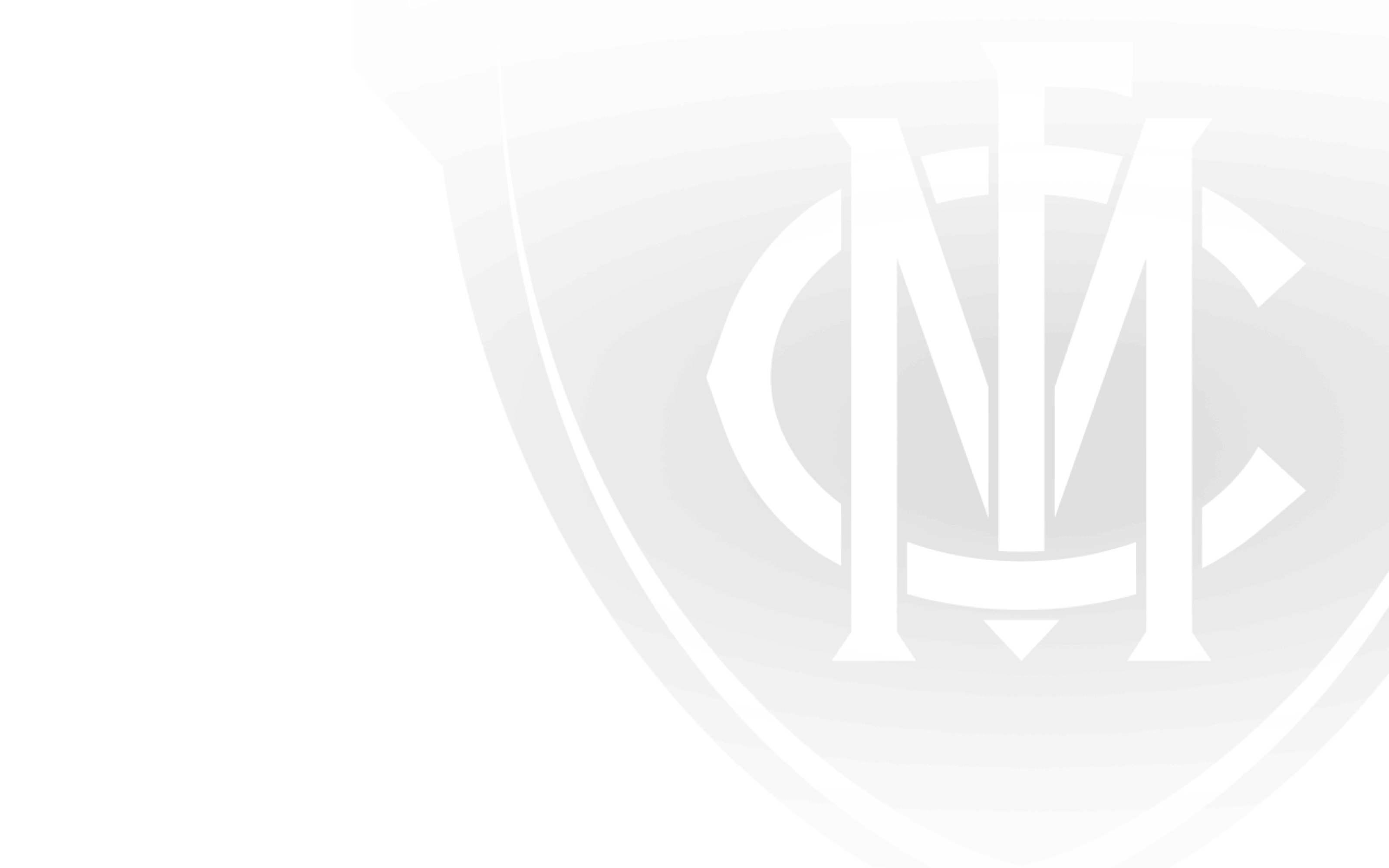MELBOURNE will wear the specially made Indigenous jumper it wore in Alice Springs last year for its round 18 clash against Port Adelaide at the MCG.
The Demons will also wear the guernsey again against the Gold Coast Suns at TIO Traeger Park Oval in round 10, but Neville Jetta, a proud Noongar man, said it was a great opportunity to wear it on the ‘G in front of Melbourne’s home crowd.
“The design is about the MCG and Yarra Park, and we really want to be able to wear it on the MCG and represent what the jumper means,” he told melbournefc.com.au.
Melbourne will wear its Indigenous jumper on the MCG in round 18 (Photo: Matthew Goodrope)
“It’s a proud moment to be able to showcase the jumper in front of the people that it represents – the Koori people and Wurundjeri tribe, and the MCG and Yarra Park. Being able to represent them and the Melbourne Football Club – given where it’s based, and what the MCG and Yarra Park was before settlement – will be really exciting.
“I know the boys will definitely pay respect to the jumper and look forward to going out and representing the jumper, and what it represents and the people.”
Jetta said the club was also set to launch its Reconciliation Action Plan in round 18.
“It will be a document that will hold, not only the club, but the people within it to keep reconciliation going, when there are no Indigenous players, Aboriginal players or Torres Strait Islander players at the club. It’s to represent the past players and to keep that connection with the community,” he said.
“We have been doing a lot to represent our culture and the first peoples land that we train on and play on.
“The past players are very important to that because they’re the ones that have been the trailblazers for myself, Jeffy [Garlett], Jay [Kennedy-Harris] and Dion [Johnstone]. The past players have allowed us to do what we do on the football field. If it wasn’t for them, I dare say it’d be a lot harder for us to be able to go out and play our footy and do the stuff off-field.”
The guernsey is available now at The Demon Shop
About the Artist
Mandy Nicholson is a multifaceted artist who belongs to the Wurundjeri-willam (Woiwurrung language) clan, the Traditional Owners of Melbourne.
She has practised visual art since 1994 and studied Koorie art and design at RMIT University in Bundoora and Monash University.
Full Story
Front of guernsey
This design shows the wangim in flight mode depicting speed and fitness, connecting this to the attributes of the original game of Marngrook and the modern game of AFL. The wangim are embedded into the Birrarung (Yarra-river of mists) to show the connection to the Traditional Custodians of Melbourne, the Wurundjeri people. We are fresh water people as the Birrarung runs right through the middle of our Country, from the ngurrak (mountains) to the warinj (sea). It also honours the original course of the Birrarung before it was straightened and how it used to flow strong and cleanse the area by flooding annually. The small pathways seen throughout the river are the paths of our ancestor’s gurrong (canoes). These gurrong have travelled the waterways of Melbourne either for day to day life, but also represent the many visitors that come for large traditional gatherings such as the Tanderrum. This ceremony happens just over the Barak Bridge from the MCG. This traditional practise has been reignited since 2013 and is an annual event where the mobs of the Kulin come together to share and dance. These paths created by the many gurrong (canoes) are strong and will always be there. The 4 wangim also honour our ancestors from the north, south, east and west.
Back of guernsey
This design honours one of most respected Ngurungaeta (leaders), Beruk (William Barak). He has left an enormous legacy for his descendants by helping record our language Woi wurrung, the many stories of creation he shared, and his paintings predict traditional ceremony, which have all survived the colonial attempts to destroy our culture. The carved design is from one of his original shields and also connects to the fact that there are scar trees still remaining in the MCG carpark area. Scars are caused for the creation of gayaam (shields), gurrong (canoes), wilam (bark for huts). The Dreaming Track on the shoulder shows the many paths travelled by our ancestors across the generations. It also honours the fact that Beruk and a number of men walked from Healesville to Melbourne several times to ask for better conditions for his people at Coranderrk Station. The Dreaming Track on the waist is the Birrarung (Yarra = river of mist), such a strong symbol for our people, our connection to this river isn’t simply physical, but spiritual and emotional. Our creation stories that Berak has handed down explain how this river came to be.


